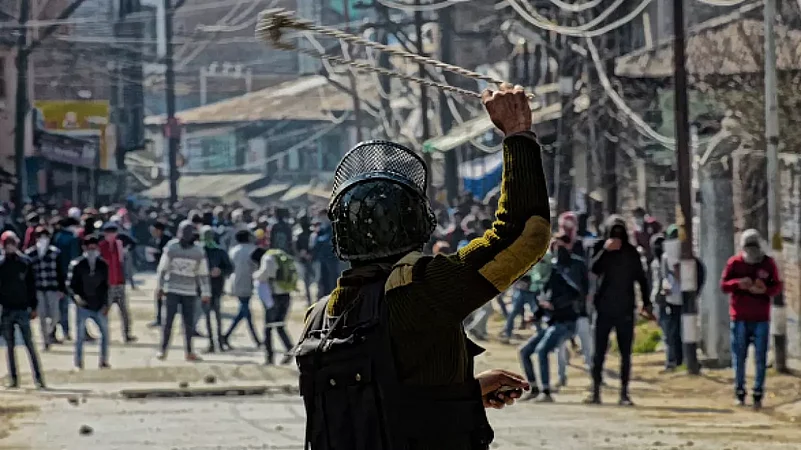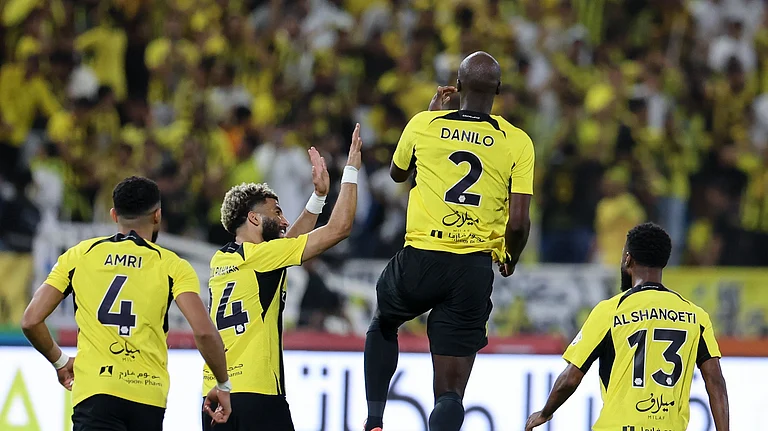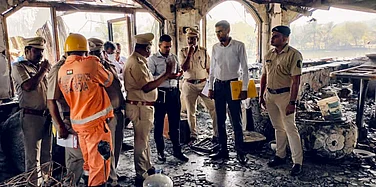As the Supreme Court pronounces its judgement on the constitutionality of the abrogation of Article 370 today, here's a look at the arguements put forth by the petitioners in the lead up to the verdict.
The five-judge bench led by Chief Justice DY Chandrchud heard pleas against the Union Government’s 2019 move in August and September of this year. The focus of the discussion had been on the constitutional orders by former President Ram Nath Kovind amending laws to bring the abrogation of Article 370 into effect, and the subsequent bifurcation of the state into three Union Territories.
Petitioners had argued there is no constitutional machinery to revoke Jammu and Kashmir’s special autonomy granted to it under Article 370.
How was Article 370 abrogated in 2019?
On August 5, 2019, the government decided to revoke Article 370 of the Indian Constitution.
The then President Ram Nath Kovind issued Constitutional Order 272, which made changes to Article 367, which in turn helped in creating a pathway for the abrogation of Article 370, which was not possible before.
Article 367 of the Indian Constitution provides for the interpretation of the Constitution. It’s like a guide for understanding the Constitution and making changes to laws. The President's amendment amended it in a way that instead of needing the approval of the Jammu and Kashmir “Constituent Assembly” to change Article 370, now the “Legislative Assembly” could give the approval.
Because Jammu and Kashmir was under President's Rule, the authority of the Jammu and Kashmir Legislative Assembly was transferred to the Union Parliament.
Within a few hours, the Rajya Sabha recommended the cessation of operation of Article 370. President Kovind issued another constitutional order, CO 273, officially confirming the abrogation of Article 370 based on this recommendation.
On August 9, Jammu and Kashmir Reorganisation Act was passed in the Parliament bifurcating the state into two Union Territories – Jammu and Kashmir and Ladakh.
On August 6, 2019, Advocate Manohar Lal Sharma filed a petition challenging the constitutionality of the dilution of Article 370. Several other petitioners later came forward.
Kapil Sibal’s Arguments In SC
The pleas were heard in the Supreme Court in August of this year starting with Senior Advocate Kapil Sibal who opened for the petitioners.
Sibal asserted that Article 370 was a permanent constitutional provision, and only the Constituent Assembly of Jammu and Kashmir held the authority to revoke it. He contended that the Constituent Assembly's recommendation was essential and could not be substituted by decisions of the standard Parliament or Legislative Assembly.
Sibal made references to B R Ambedkar’s speeches in Constituent Assembly debates and said Ambedkar showed the clear distinction between the Constituent Assembly and the Legislative Assembly, according to Supreme Court Observer.
Ambedkar pointed out that the Constituent Assembly had “no partisan motives beyond securing a good and workable Constitution, it had no axe to grind”. If Parliament takes on the role of a Constituent Assembly, “its members will be acting as partisans”, seeking to carry amendments to facilitate their own party’s agenda. He emphasised that there was a hidden political motive in the removal of Article 370.
Sibal condemned the constitutional orders which were instrumental in abrogation of article 370 and said the Union tried to bypass the requirement of approval from the Constituent Assembly. He argued that the Legislative Assembly of Jammu and Kashmir itself had no power to recommend the abrogation of Article 370.
This led to an exchange between him and Chief Justice D.Y. Chandrachud and Justice Kaul, where he was asked - with the Constituent Assembly dissolved in 1957 and the J&K Legislative Assembly having no authority to recommend abrogation, was there no constitutional mechanism to remove Article 370 from the Constitution? Kapil Sibal confirmed their query.
From Sibal's arguments, it could be inferred that he suggested the abrogation of Article 370 was not possible after the dissolution of the Constituent Assembly in 1957
As per India Today, Kaul commented on Sibal’s suggestion of Article 370 being a permanent one and said, “Constitution is also a live document. It's not static. Can you say that there is no mechanism to change it even when everyone wants to change it?
To this. Justice Gavai added, “Your argument is that unless the views of the entire population of the state of J&K is taken into consideration, the abrogation can't be done?”
Sibal said that he understood that it had to be done but it should have followed a constitutional way of doing it. The senior advocate also expressed his disapproval of the declaration of the state being split into three Union Territories.
"Can a state be made into a Union Territory by the Union on its own whims and fancy without consulting the people who would be affected. How can you create a UT under this. You can carve a UT but it does not allow extinguishment of a state. If you can do it to one you can do it to others and make it a presidential form of government everywhere," said Sibal, as per Bar & Bench.
Sibal said all the changes had been made without the consent of the residents of the state, “Where is the representative voice of Jammu and Kashmir. Have we heard them in the last four years? You do away with consent by an executive act. You do not take their views. Where do we stand?”



























